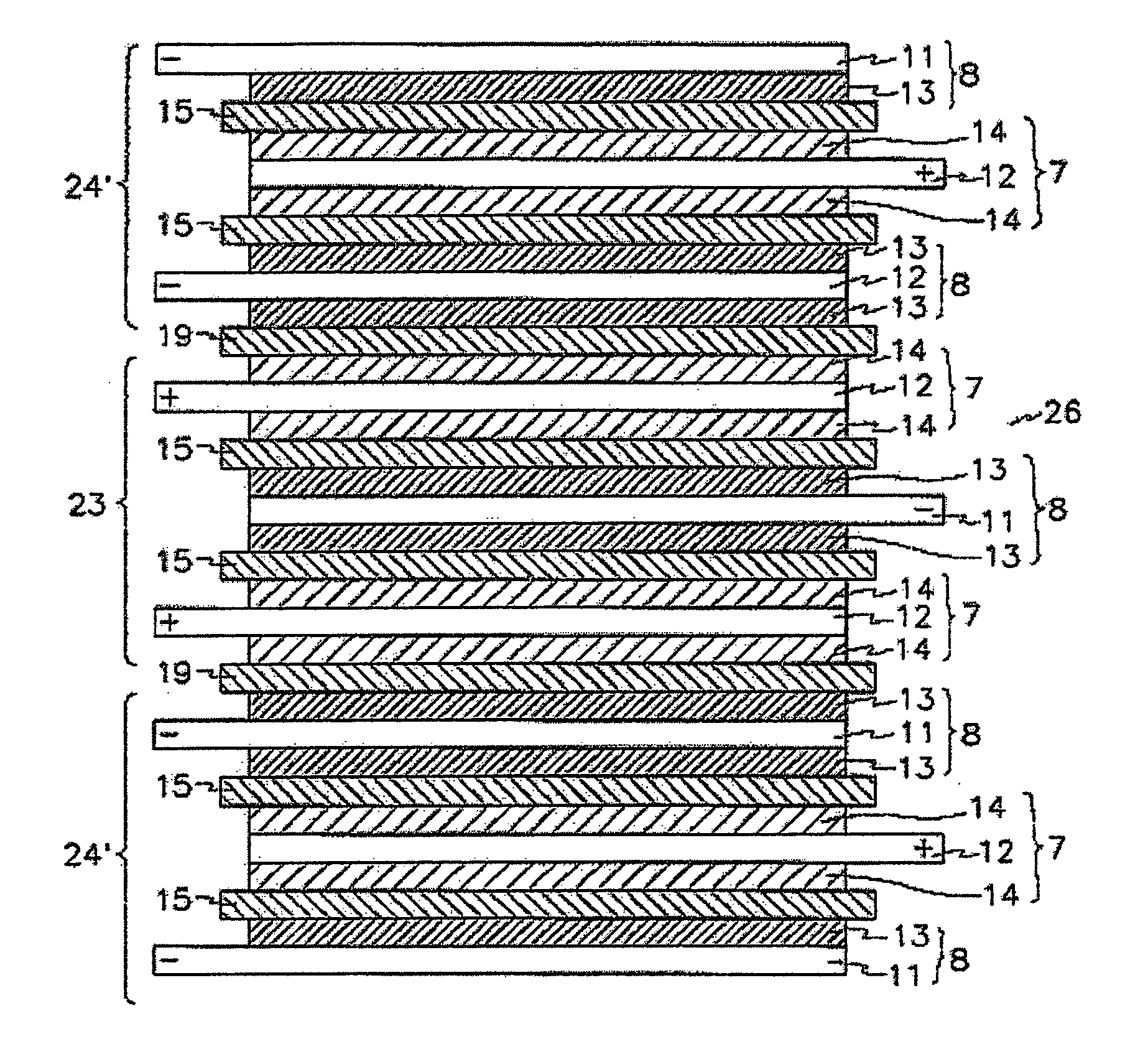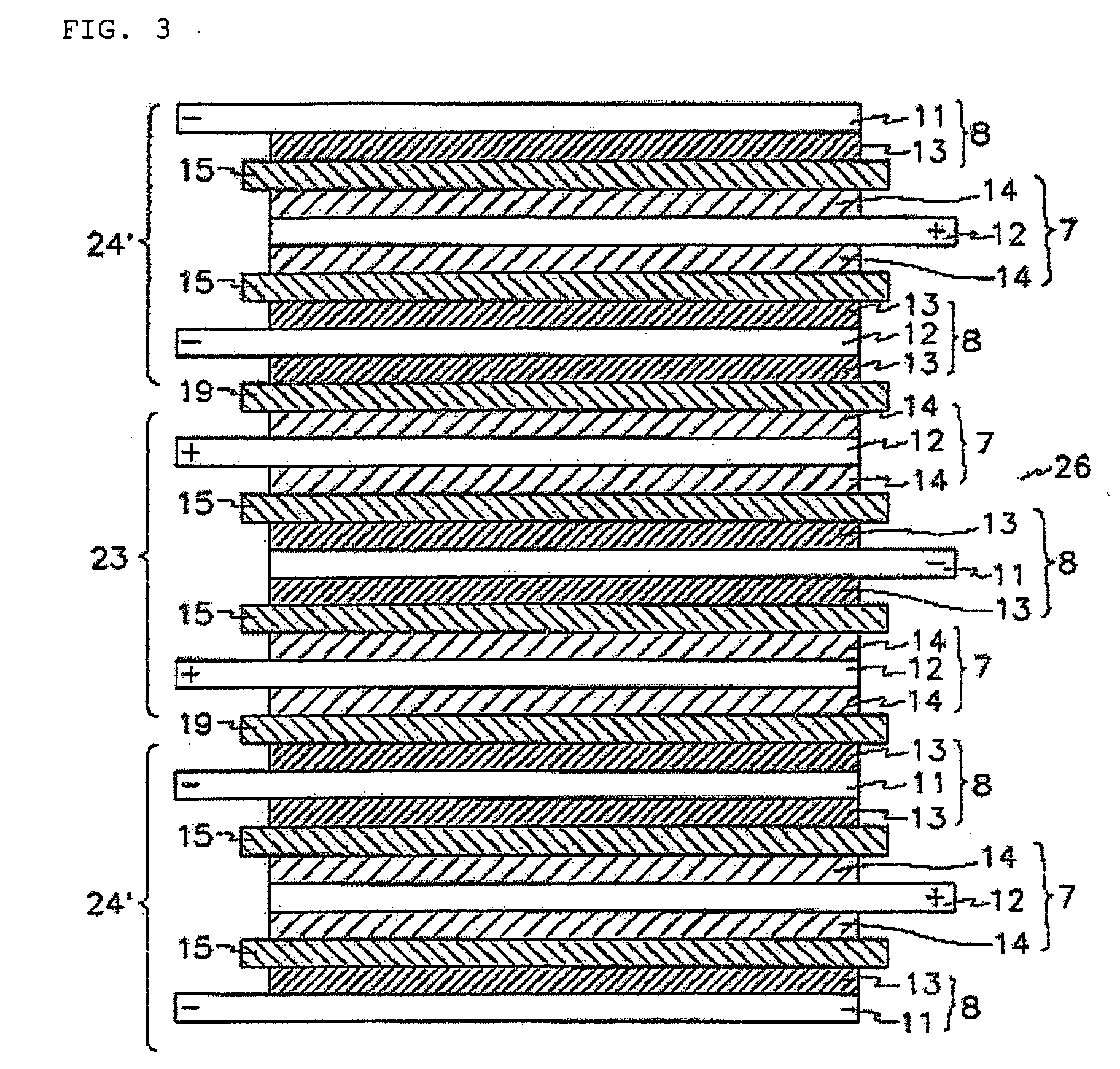Polymer binder for electrochemical device comprising multiply stacked electrochemical cells
a technology of electrochemical cells and polymer binders, which is applied in the field of polymer binders for electrochemical devices comprising multiply stacked electrochemical cells, can solve the problems of lithium secondary batteries with a safety problem, relatively complicated manufacturing process of lithium secondary batteries, etc., and achieve the effect of increasing the bulk energy density of batteries
- Summary
- Abstract
- Description
- Claims
- Application Information
AI Technical Summary
Benefits of technology
Problems solved by technology
Method used
Image
Examples
examples [UNK]
EXAMPLES 8˜15
[0106] Seed (1) obtained from Example 1 was used and the monomers for emulsion polymerization, which had various compositions as described in the following Table 2, were introduced thereto to provide binder polymers, in the same manner as described in Example 1. The physical properties of the binder polymers were also shown in Table 2. As compared to the binder polymer according to Example 1, the binder polymers according to Examples 8˜10 had a different glass transition temperature, the binder polymers according to Examples 11˜13 has a different gel content, and the binder polymers according to Examples 14 and 15 had a different particle size. The seed used to provide the binder polymers according to Examples 14 and 15 was obtained by using sodium lauryl sulfate in an amount of 0.3 g and 0.06 g, respectively.
[0107] Additionally, stacked cells using a full cell as a basic unit and batteries were manufactured in the same manner as described in Example 1.
TABLE 2(unit: ...
example 16
[0108] First, 167.4 g of ion exchange water were introduced into a reactor and the reactor was heated to 75° C. When ion exchange water reached 75° C., 8.1 g of 1,3-butadiene, 10.1 g of styrene and 0.23 g of sodium lauryl sulfate were introduced into the reactor. Next, 0.14 g of potassium persulfate was dissolved into 9.0 g of ion exchange water and the solution was introduced into the reactor while maintaining the internal temperature of the reactor at 75° C. to provide seed (2). The seed (2) was used to provide a binder polymer and to determine the effect of a composition of seed upon the physical properties of a binder.
[0109] Other conditions in the preparation of the binder polymer were the same as Example 1 so as to evaluate the physical properties of a binder depending on the kind of seed. The finally formed binder had a particle diameter of 201 nm, a glass transition temperature of −3° C. and a gel content of 87%.
[0110] Additionally, a stacked cell using a full cell as a ba...
experimental example 1
Evaluation of Adhesion
[0112] The following experiment was performed to evaluate the adhesion of an electrode active material to a collector in the electrode obtained by using the binder composition according to the present invention.
[0113] Each of the electrodes according to Examples 1˜16 was used as a sample, and each of the electrodes according to Comparative Examples 1˜4 was used as a control.
[0114] After each electrode, cut into a size of 1 cm, was attached onto a glass substrate, 180° peel strength was measured while the collector was removed. Such measurement was repeated at least five times and the measured values were averaged for the final evaluation. The experimental results are shown in the following Table 4.
PUM
| Property | Measurement | Unit |
|---|---|---|
| particle diameter | aaaaa | aaaaa |
| Tg | aaaaa | aaaaa |
| temperature | aaaaa | aaaaa |
Abstract
Description
Claims
Application Information
 Login to View More
Login to View More - R&D
- Intellectual Property
- Life Sciences
- Materials
- Tech Scout
- Unparalleled Data Quality
- Higher Quality Content
- 60% Fewer Hallucinations
Browse by: Latest US Patents, China's latest patents, Technical Efficacy Thesaurus, Application Domain, Technology Topic, Popular Technical Reports.
© 2025 PatSnap. All rights reserved.Legal|Privacy policy|Modern Slavery Act Transparency Statement|Sitemap|About US| Contact US: help@patsnap.com



